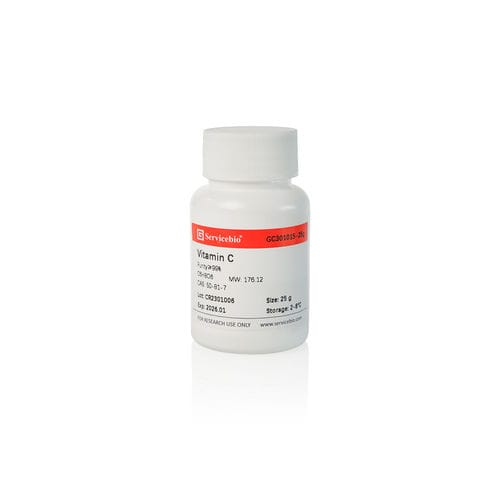

- Products
- Catalogs
- News & Trends
- Exhibitions
Biochemistry reagent GC301015-25gvitamin C
Add to favorites
Compare this product
fo_shop_gate_exact_title
Characteristics
- Applications
- for biochemistry
- Tested parameter
- vitamin C
- Purity
99 %
Description
Introduction
Vitamin C, also known as vitamin C, is a polyhydroxy compound with the chemical formula C6H8O6. Its structure is similar to glucose, and the two adjacent enol hydroxyl groups in the second and third positions of the molecule are easily dissociated to release H+, so it has the nature of acid, also known as L-ascorbic acid. Vitamin C has strong reducibility and is easily oxidized to dehydrovitamin C, but its reaction is reversible, and ascorbic acid and dehydroascorbic acid have the same physiological function, but if dehydroascorbic acid is further hydrolyzed to produce diketogualoic acid, the reaction is irreversible and the physiological efficacy is completely lost.
Vitamin C is an acidic white crystalline or crystalline powder. It is easily oxidized and turns yellow in humid air. 1 g of this product is soluble in about 3mL water, 30mL ethanol, 50mL absolute ethanol and 100mL glycerol, but insoluble in diethyl ether, benzene, trichloromethane, petroleum ether, oils and fats. Vitamin C is flammable and burns to produce irritating fumes.
Related Searches
- Solution reagent kit
- Molecular biology reagent kit
- Histology reagent kit
- Buffer solution reagent kit
- Clinical chemistry reagent
- Staining solution reagent kit
- Electrophoresis reagent kit
- Pathology reagent
- Vitamin reagent kit
- Dulbecco's modified Eagle medium reagent
- Protein extraction reagent kit
- Tissue culture reagent
*Prices are pre-tax. They exclude delivery charges and customs duties and do not include additional charges for installation or activation options. Prices are indicative only and may vary by country, with changes to the cost of raw materials and exchange rates.
